[av_section min_height=’percent’ min_height_pc=’80’ min_height_px=’500px’ shadow=’no-border-styling’ bottom_border=’no-border-styling’ bottom_border_diagonal_color=’#333333′ bottom_border_diagonal_direction=” bottom_border_style=” padding=’default’ margin=’aviaTBmargin’ custom_margin=’0px’ custom_margin_sync=’true’ av-desktop-custom_margin=” av-desktop-custom_margin_sync=’true’ av-medium-custom_margin=” av-medium-custom_margin_sync=’true’ av-small-custom_margin=” av-small-custom_margin_sync=’true’ av-mini-custom_margin=” av-mini-custom_margin_sync=’true’ svg_div_top=” svg_div_top_color=’#333333′ svg_div_top_width=’100′ svg_div_top_height=’50’ svg_div_top_max_height=’none’ svg_div_top_opacity=” svg_div_bottom=” svg_div_bottom_color=’#333333′ svg_div_bottom_width=’100′ svg_div_bottom_height=’50’ svg_div_bottom_max_height=’none’ svg_div_bottom_opacity=” color=’main_color’ background=’bg_color’ custom_bg=” background_gradient_direction=’vertical’ background_gradient_color1=’#000000′ background_gradient_color2=’#ffffff’ background_gradient_color3=” src=’https://biomotion.tech/wp-content/uploads/2023/03/web-1920-7.jpg’ attachment=’384′ attachment_size=’full’ attach=’scroll’ position=’center center’ repeat=’stretch’ video=” video_ratio=’16:9′ overlay_opacity=’1′ overlay_color=” overlay_pattern=’custom’ overlay_custom_pattern=’https://biomotion.tech/wp-content/uploads/2023/03/Mask-Group-4.webp’ custom_arrow_bg=” css_position_z_index=” av-desktop-css_position_z_index=” av-medium-css_position_z_index=” av-small-css_position_z_index=” av-mini-css_position_z_index=” id=” custom_class=’hero produkt-hero grad_begins’ template_class=” aria_label=” av_element_hidden_in_editor=’0′ av_uid=’av-lepqjn1s’ sc_version=’1.0′]
[av_two_fifth first min_height=’av-equal-height-column’ vertical_alignment=’av-align-middle’ space=’no_margin’ row_boxshadow_width=’10’ row_boxshadow_color=” margin=’0px’ margin_sync=’true’ av-desktop-margin=” av-desktop-margin_sync=’true’ av-medium-margin=” av-medium-margin_sync=’true’ av-small-margin=” av-small-margin_sync=’true’ av-mini-margin=” av-mini-margin_sync=’true’ mobile_breaking=’av-break-at-tablet’ mobile_column_order=” border=” border_style=’solid’ border_color=” radius=” radius_sync=’true’ min_col_height=” padding=” padding_sync=’true’ av-desktop-padding=” av-desktop-padding_sync=’true’ av-medium-padding=” av-medium-padding_sync=’true’ av-small-padding=” av-small-padding_sync=’true’ av-mini-padding=” av-mini-padding_sync=’true’ svg_div_top=” svg_div_top_color=’#333333′ svg_div_top_width=’100′ svg_div_top_height=’50’ svg_div_top_max_height=’none’ svg_div_top_opacity=” svg_div_bottom=” svg_div_bottom_color=’#333333′ svg_div_bottom_width=’100′ svg_div_bottom_height=’50’ svg_div_bottom_max_height=’none’ svg_div_bottom_opacity=” column_boxshadow_width=’10’ column_boxshadow_color=” background=’bg_color’ background_color=” background_gradient_direction=’vertical’ background_gradient_color1=’#000000′ background_gradient_color2=’#ffffff’ background_gradient_color3=” src=” attachment=” attachment_size=” background_position=’top left’ background_repeat=’no-repeat’ highlight_size=’1.1′ animation=” animation_duration=” animation_custom_bg_color=” animation_z_index_curtain=’100′ parallax_parallax=” parallax_parallax_speed=” av-desktop-parallax_parallax=” av-desktop-parallax_parallax_speed=” av-medium-parallax_parallax=” av-medium-parallax_parallax_speed=” av-small-parallax_parallax=” av-small-parallax_parallax_speed=” av-mini-parallax_parallax=” av-mini-parallax_parallax_speed=” css_position=” css_position_location=’,,,’ css_position_z_index=” av-desktop-css_position=” av-desktop-css_position_location=’,,,’ av-desktop-css_position_z_index=” av-medium-css_position=” av-medium-css_position_location=’,,,’ av-medium-css_position_z_index=” av-small-css_position=” av-small-css_position_location=’,,,’ av-small-css_position_z_index=” av-mini-css_position=” av-mini-css_position_location=’,,,’ av-mini-css_position_z_index=” link=” linktarget=” link_hover=” title_attr=” alt_attr=” mobile_display=” mobile_col_pos=’0′ id=” custom_class=” template_class=” aria_label=” av_uid=’av-42fdt’ sc_version=’1.0′]
[av_heading heading=’Unlock advanced biofabrication in a single powerful platform built to adapt to your research.’ tag=’h4′ style=’blockquote modern-quote’ subheading_active=’subheading_above’ show_icon=” icon=’ue800′ font=’entypo-fontello’ size=” av-desktop-font-size-title=” av-medium-font-size-title=” av-small-font-size-title=” av-mini-font-size-title=” subheading_size=” av-desktop-font-size=” av-medium-font-size=” av-small-font-size=” av-mini-font-size=” icon_size=” av-desktop-font-size-1=” av-medium-font-size-1=” av-small-font-size-1=” av-mini-font-size-1=” color=” custom_font=” subheading_color=” seperator_color=” icon_color=” margin=’,,40px,’ av-desktop-margin=” av-desktop-margin_sync=’true’ av-medium-margin=” av-medium-margin_sync=’true’ av-small-margin=” av-small-margin_sync=’true’ av-mini-margin=” av-mini-margin_sync=’true’ headline_padding=” headline_padding_sync=’true’ av-desktop-headline_padding=” av-desktop-headline_padding_sync=’true’ av-medium-headline_padding=” av-medium-headline_padding_sync=’true’ av-small-headline_padding=” av-small-headline_padding_sync=’true’ av-mini-headline_padding=” av-mini-headline_padding_sync=’true’ padding=” av-desktop-padding=” av-medium-padding=” av-small-padding=” av-mini-padding=” icon_padding=’10’ av-desktop-icon_padding=” av-medium-icon_padding=” av-small-icon_padding=” av-mini-icon_padding=” link=” link_target=” id=” custom_class=’amha_sp-heading amha_sp-heading__h4 w-reg’ template_class=” av_uid=’av-lex1esqp’ sc_version=’1.0′ admin_preview_bg=”]
ADAPTIVE BIOPRINTING STARTS HERE
[/av_heading]
[av_button label=’Get a quote’ icon_select=’yes’ icon=’ue804′ font=’icons-amha’ link=’page,657′ link_target=” size=’medium’ position=’center’ label_display=” title_attr=” size-text=” av-desktop-font-size-text=” av-medium-font-size-text=” av-small-font-size-text=” av-mini-font-size-text=” margin=” margin_sync=’true’ padding=” padding_sync=’true’ av-desktop-margin=” av-desktop-margin_sync=’true’ av-desktop-padding=” av-desktop-padding_sync=’true’ av-medium-margin=” av-medium-margin_sync=’true’ av-medium-padding=” av-medium-padding_sync=’true’ av-small-margin=” av-small-margin_sync=’true’ av-small-padding=” av-small-padding_sync=’true’ av-mini-margin=” av-mini-margin_sync=’true’ av-mini-padding=” av-mini-padding_sync=’true’ color_options=” color=’theme-color’ custom_bg=’#444444′ custom_font=’#ffffff’ btn_color_bg=’theme-color’ btn_custom_grad_direction=’vertical’ btn_custom_grad_1=’#000000′ btn_custom_grad_2=’#ffffff’ btn_custom_grad_3=” btn_custom_grad_opacity=’0.7′ btn_custom_bg=’#444444′ btn_color_bg_hover=’theme-color-highlight’ btn_custom_bg_hover=’#444444′ btn_color_font=’theme-color’ btn_custom_font=’#ffffff’ btn_color_font_hover=’white’ btn_custom_font_hover=’#ffffff’ border=” border_width=” border_width_sync=’true’ border_color=” border_radius=” border_radius_sync=’true’ box_shadow=” box_shadow_style=’0px,0px,0px,0px’ box_shadow_color=” animation=” animation_duration=” animation_custom_bg_color=” animation_z_index_curtain=’100′ hover_opacity=” sonar_effect_effect=” sonar_effect_color=” sonar_effect_duration=’1′ sonar_effect_scale=” sonar_effect_opac=’0.5′ css_position=” css_position_location=’,,,’ css_position_z_index=” av-desktop-css_position=” av-desktop-css_position_location=’,,,’ av-desktop-css_position_z_index=” av-medium-css_position=” av-medium-css_position_location=’,,,’ av-medium-css_position_z_index=” av-small-css_position=” av-small-css_position_location=’,,,’ av-small-css_position_z_index=” av-mini-css_position=” av-mini-css_position_location=’,,,’ av-mini-css_position_z_index=” id=” custom_class=’btn btn__primary’ template_class=” av_uid=’av-leptml36′ sc_version=’1.0′ admin_preview_bg=”]
[av_button label=’BOOK A DEMO’ icon_select=’no’ icon=’ue800′ font=’entypo-fontello’ link=’manually,https://cal.com/gregor-weisgrab/book-a-demo’ link_target=’_blank’ size=’medium’ position=’center’ label_display=” title_attr=” size-text=” av-desktop-font-size-text=” av-medium-font-size-text=” av-small-font-size-text=” av-mini-font-size-text=” margin=” margin_sync=’true’ padding=” padding_sync=’true’ av-desktop-margin=” av-desktop-margin_sync=’true’ av-desktop-padding=” av-desktop-padding_sync=’true’ av-medium-margin=” av-medium-margin_sync=’true’ av-medium-padding=” av-medium-padding_sync=’true’ av-small-margin=” av-small-margin_sync=’true’ av-small-padding=” av-small-padding_sync=’true’ av-mini-margin=” av-mini-margin_sync=’true’ av-mini-padding=” av-mini-padding_sync=’true’ color_options=” color=’theme-color’ custom_bg=’#444444′ custom_font=’#ffffff’ btn_color_bg=’theme-color’ btn_custom_grad_direction=’vertical’ btn_custom_grad_1=’#000000′ btn_custom_grad_2=’#ffffff’ btn_custom_grad_3=” btn_custom_grad_opacity=’0.7′ btn_custom_bg=’#444444′ btn_color_bg_hover=’theme-color-highlight’ btn_custom_bg_hover=’#444444′ btn_color_font=’theme-color’ btn_custom_font=’#ffffff’ btn_color_font_hover=’white’ btn_custom_font_hover=’#ffffff’ border=” border_width=” border_width_sync=’true’ border_color=” border_radius=” border_radius_sync=’true’ box_shadow=” box_shadow_style=’0px,0px,0px,0px’ box_shadow_color=” animation=” animation_duration=” animation_custom_bg_color=” animation_z_index_curtain=’100′ hover_opacity=” sonar_effect_effect=” sonar_effect_color=” sonar_effect_duration=’1′ sonar_effect_scale=” sonar_effect_opac=’0.5′ css_position=” css_position_location=’,,,’ css_position_z_index=” av-desktop-css_position=” av-desktop-css_position_location=’,,,’ av-desktop-css_position_z_index=” av-medium-css_position=” av-medium-css_position_location=’,,,’ av-medium-css_position_z_index=” av-small-css_position=” av-small-css_position_location=’,,,’ av-small-css_position_z_index=” av-mini-css_position=” av-mini-css_position_location=’,,,’ av-mini-css_position_z_index=” id=” custom_class=’btn btn__secondary’ template_class=” av_uid=’av-leptn2qr’ sc_version=’1.0′ admin_preview_bg=”]
[/av_two_fifth][av_three_fifth min_height=” vertical_alignment=’av-align-top’ space=” row_boxshadow_width=’10’ row_boxshadow_color=” margin=’0px’ margin_sync=’true’ av-desktop-margin=” av-desktop-margin_sync=’true’ av-medium-margin=” av-medium-margin_sync=’true’ av-small-margin=” av-small-margin_sync=’true’ av-mini-margin=” av-mini-margin_sync=’true’ mobile_breaking=” mobile_column_order=” border=” border_style=’solid’ border_color=” radius=” radius_sync=’true’ min_col_height=” padding=” padding_sync=’true’ av-desktop-padding=” av-desktop-padding_sync=’true’ av-medium-padding=” av-medium-padding_sync=’true’ av-small-padding=” av-small-padding_sync=’true’ av-mini-padding=” av-mini-padding_sync=’true’ svg_div_top=” svg_div_top_color=’#333333′ svg_div_top_width=’100′ svg_div_top_height=’50’ svg_div_top_max_height=’none’ svg_div_top_opacity=” svg_div_bottom=” svg_div_bottom_color=’#333333′ svg_div_bottom_width=’100′ svg_div_bottom_height=’50’ svg_div_bottom_max_height=’none’ svg_div_bottom_opacity=” column_boxshadow_width=’10’ column_boxshadow_color=” background=’bg_color’ background_color=” background_gradient_direction=’vertical’ background_gradient_color1=’#000000′ background_gradient_color2=’#ffffff’ background_gradient_color3=” src=” attachment=” attachment_size=” background_position=’top left’ background_repeat=’no-repeat’ highlight_size=’1.1′ animation=” animation_duration=” animation_custom_bg_color=” animation_z_index_curtain=’100′ parallax_parallax=” parallax_parallax_speed=” av-desktop-parallax_parallax=” av-desktop-parallax_parallax_speed=” av-medium-parallax_parallax=” av-medium-parallax_parallax_speed=” av-small-parallax_parallax=” av-small-parallax_parallax_speed=” av-mini-parallax_parallax=” av-mini-parallax_parallax_speed=” css_position=’relative’ css_position_location=’,,,’ css_position_z_index=” av-desktop-css_position=” av-desktop-css_position_location=’,,,’ av-desktop-css_position_z_index=” av-medium-css_position=” av-medium-css_position_location=’,,,’ av-medium-css_position_z_index=” av-small-css_position=” av-small-css_position_location=’,,,’ av-small-css_position_z_index=” av-mini-css_position=” av-mini-css_position_location=’,,,’ av-mini-css_position_z_index=” link=” linktarget=” link_hover=” title_attr=” alt_attr=” mobile_display=” mobile_col_pos=’0′ id=” custom_class=” template_class=” aria_label=” av_uid=’av-lex1cpe8′ sc_version=’1.0′]
[av_image src=’https://biomotion.tech/wp-content/uploads/2023/03/biomotion-06.webp’ attachment=’125′ attachment_size=’full’ copyright=” caption=” image_size=’masonry’ styling=’no-styling’ box_shadow=’none’ box_shadow_width=’10’ box_shadow_color=” align=’center’ font_size=” overlay_opacity=’0.4′ overlay_color=’#000000′ overlay_text_color=’#ffffff’ animation=’no-animation’ animation_duration=” animation_custom_bg_color=” animation_z_index_curtain=’100′ parallax_parallax=” parallax_parallax_speed=” av-desktop-parallax_parallax=” av-desktop-parallax_parallax_speed=” av-medium-parallax_parallax=” av-medium-parallax_parallax_speed=” av-small-parallax_parallax=” av-small-parallax_parallax_speed=” av-mini-parallax_parallax=” av-mini-parallax_parallax_speed=” hover=” blur_image=” grayscale_image=” fade_image=” appearance=” css_position=’relative’ css_position_location=’,,0,’ css_position_z_index=” av-desktop-css_position=” av-desktop-css_position_location=’,,,’ av-desktop-css_position_z_index=” av-medium-css_position=’relative’ av-medium-css_position_location=’,,-70px,’ av-medium-css_position_z_index=” av-small-css_position=’relative’ av-small-css_position_location=’,,-70px,’ av-small-css_position_z_index=” av-mini-css_position=’relative’ av-mini-css_position_location=’,,-70px,’ av-mini-css_position_z_index=” transform_perspective=” transform_rotation=’,,,’ transform_scale=’,,’ transform_skew=’,’ transform_translate=’,,’ av-desktop-transform_perspective=” av-desktop-transform_rotation=’,,,’ av-desktop-transform_scale=’,,’ av-desktop-transform_skew=’,’ av-desktop-transform_translate=’,,’ av-medium-transform_perspective=” av-medium-transform_rotation=’,,,’ av-medium-transform_scale=’,,’ av-medium-transform_skew=’,’ av-medium-transform_translate=’,,’ av-small-transform_perspective=” av-small-transform_rotation=’,,,’ av-small-transform_scale=’,,’ av-small-transform_skew=’,’ av-small-transform_translate=’,,’ av-mini-transform_perspective=” av-mini-transform_rotation=’,,,’ av-mini-transform_scale=’,,’ av-mini-transform_skew=’,’ av-mini-transform_translate=’,,’ mask_overlay=” mask_overlay_shape=’blob’ mask_overlay_size=’contain’ mask_overlay_scale=’100%’ mask_overlay_position=’center center’ mask_overlay_repeat=’no-repeat’ mask_overlay_rotate=” mask_overlay_rad_shape=’circle’ mask_overlay_rad_position=’center center’ mask_overlay_opacity1=’0′ mask_overlay_opacity2=’1′ mask_overlay_opacity3=” link=” target=” title_attr=” alt_attr=” img_scrset=” lazy_loading=’disabled’ id=” custom_class=” template_class=” av_element_hidden_in_editor=’0′ av_uid=’av-leri85i0′ sc_version=’1.0′ admin_preview_bg=”][/av_image]
[/av_three_fifth]
[/av_section]
[av_section min_height=” min_height_pc=’25’ min_height_px=’500px’ shadow=’no-border-styling’ bottom_border=’no-border-styling’ bottom_border_diagonal_color=’#333333′ bottom_border_diagonal_direction=” bottom_border_style=” padding=’default’ margin=’aviaTBmargin’ custom_margin=’0px,0′ av-desktop-custom_margin=” av-desktop-custom_margin_sync=’true’ av-medium-custom_margin=” av-medium-custom_margin_sync=’true’ av-small-custom_margin=” av-small-custom_margin_sync=’true’ av-mini-custom_margin=” av-mini-custom_margin_sync=’true’ svg_div_top=” svg_div_top_color=’#333333′ svg_div_top_width=’100′ svg_div_top_height=’50’ svg_div_top_max_height=’none’ svg_div_top_opacity=” svg_div_bottom=” svg_div_bottom_color=’#333333′ svg_div_bottom_width=’100′ svg_div_bottom_height=’50’ svg_div_bottom_max_height=’none’ svg_div_bottom_opacity=” color=’main_color’ background=’bg_color’ custom_bg=” background_gradient_direction=’vertical’ background_gradient_color1=’#000000′ background_gradient_color2=’#ffffff’ background_gradient_color3=” src=” attachment=” attachment_size=” attach=’scroll’ position=’top left’ repeat=’no-repeat’ video=” video_ratio=’16:9′ overlay_opacity=’0.5′ overlay_color=” overlay_pattern=” overlay_custom_pattern=” custom_arrow_bg=” css_position_z_index=” av-desktop-css_position_z_index=” av-medium-css_position_z_index=” av-small-css_position_z_index=” av-mini-css_position_z_index=” id=’i_must_explain’ custom_class=’i_must_explain with-pattern’ template_class=” aria_label=” av_element_hidden_in_editor=’0′ av_uid=’av-1yqjd’ sc_version=’1.0′]
[av_one_full first min_height=” vertical_alignment=’av-align-top’ space=” row_boxshadow_width=’10’ row_boxshadow_color=” margin=’0px’ margin_sync=’true’ av-desktop-margin=” av-desktop-margin_sync=’true’ av-medium-margin=” av-medium-margin_sync=’true’ av-small-margin=” av-small-margin_sync=’true’ av-mini-margin=” av-mini-margin_sync=’true’ mobile_breaking=” mobile_column_order=” border=” border_style=’solid’ border_color=” radius=” radius_sync=’true’ min_col_height=” padding=’,10%,,10%’ av-desktop-padding=” av-desktop-padding_sync=’true’ av-medium-padding=” av-medium-padding_sync=’true’ av-small-padding=” av-small-padding_sync=’true’ av-mini-padding=” av-mini-padding_sync=’true’ svg_div_top=” svg_div_top_color=’#333333′ svg_div_top_width=’100′ svg_div_top_height=’50’ svg_div_top_max_height=’none’ svg_div_top_opacity=” svg_div_bottom=” svg_div_bottom_color=’#333333′ svg_div_bottom_width=’100′ svg_div_bottom_height=’50’ svg_div_bottom_max_height=’none’ svg_div_bottom_opacity=” column_boxshadow_width=’10’ column_boxshadow_color=” background=’bg_color’ background_color=” background_gradient_direction=’vertical’ background_gradient_color1=’#000000′ background_gradient_color2=’#ffffff’ background_gradient_color3=” src=” attachment=” attachment_size=” background_position=’top left’ background_repeat=’no-repeat’ highlight_size=’1.1′ animation=” animation_duration=” animation_custom_bg_color=” animation_z_index_curtain=’100′ parallax_parallax=” parallax_parallax_speed=” av-desktop-parallax_parallax=” av-desktop-parallax_parallax_speed=” av-medium-parallax_parallax=” av-medium-parallax_parallax_speed=” av-small-parallax_parallax=” av-small-parallax_parallax_speed=” av-mini-parallax_parallax=” av-mini-parallax_parallax_speed=” css_position=” css_position_location=’,,,’ css_position_z_index=” av-desktop-css_position=” av-desktop-css_position_location=’,,,’ av-desktop-css_position_z_index=” av-medium-css_position=” av-medium-css_position_location=’,,,’ av-medium-css_position_z_index=” av-small-css_position=” av-small-css_position_location=’,,,’ av-small-css_position_z_index=” av-mini-css_position=” av-mini-css_position_location=’,,,’ av-mini-css_position_z_index=” link=” linktarget=” link_hover=” title_attr=” alt_attr=” mobile_display=” mobile_col_pos=’0′ id=” custom_class=” template_class=” aria_label=” av_uid=’av-3bvlh’ sc_version=’1.0′]
[av_heading heading=’Discover how the ExplorerOne supports your innovative research’ tag=’h1′ style=’blockquote modern-quote modern-centered’ subheading_active=’subheading_above’ show_icon=” icon=’ue800′ font=’entypo-fontello’ size=” av-desktop-font-size-title=” av-medium-font-size-title=” av-small-font-size-title=” av-mini-font-size-title=” subheading_size=” av-desktop-font-size=” av-medium-font-size=” av-small-font-size=” av-mini-font-size=” icon_size=” av-desktop-font-size-1=” av-medium-font-size-1=” av-small-font-size-1=” av-mini-font-size-1=” color=” custom_font=” subheading_color=” seperator_color=” icon_color=” margin=” margin_sync=’true’ av-desktop-margin=” av-desktop-margin_sync=’true’ av-medium-margin=” av-medium-margin_sync=’true’ av-small-margin=” av-small-margin_sync=’true’ av-mini-margin=” av-mini-margin_sync=’true’ headline_padding=” headline_padding_sync=’true’ av-desktop-headline_padding=” av-desktop-headline_padding_sync=’true’ av-medium-headline_padding=” av-medium-headline_padding_sync=’true’ av-small-headline_padding=” av-small-headline_padding_sync=’true’ av-mini-headline_padding=” av-mini-headline_padding_sync=’true’ padding=’10’ av-desktop-padding=” av-medium-padding=” av-small-padding=” av-mini-padding=” icon_padding=’10’ av-desktop-icon_padding=” av-medium-icon_padding=” av-small-icon_padding=” av-mini-icon_padding=” link=” link_target=” id=” custom_class=’amha_sp-heading amha_sp-heading__h1 amha_sp-heading__subheader–center w-reg texttransformnone ‘ template_class=” av_uid=’av-leqxz49v’ sc_version=’1.0′ admin_preview_bg=”][/av_heading]
[av_textblock textblock_styling_align=” textblock_styling=” textblock_styling_gap=” textblock_styling_mobile=” size=” av-desktop-font-size=” av-medium-font-size=” av-small-font-size=” av-mini-font-size=” font_color=” color=” id=” custom_class=’w-lig’ template_class=” av_uid=’av-lex2dw59′ sc_version=’1.0′ admin_preview_bg=”]
Unlock a wide range of bioprinting applications including hydrogel and melting polymers
[/av_textblock]
[/av_one_full][av_one_half first min_height=’av-equal-height-column’ vertical_alignment=’av-align-middle’ space=’no_margin’ row_boxshadow_width=’10’ row_boxshadow_color=” custom_margin=’aviaTBcustom_margin’ margin=’100px,0px’ av-desktop-margin=” av-desktop-margin_sync=’true’ av-medium-margin=” av-medium-margin_sync=’true’ av-small-margin=” av-small-margin_sync=’true’ av-mini-margin=” av-mini-margin_sync=’true’ mobile_breaking=’av-break-at-tablet’ mobile_column_order=” border=” border_style=’solid’ border_color=” radius=” radius_sync=’true’ min_col_height=” padding=” padding_sync=’true’ av-desktop-padding=” av-desktop-padding_sync=’true’ av-medium-padding=” av-medium-padding_sync=’true’ av-small-padding=” av-small-padding_sync=’true’ av-mini-padding=” av-mini-padding_sync=’true’ svg_div_top=” svg_div_top_color=’#333333′ svg_div_top_width=’100′ svg_div_top_height=’50’ svg_div_top_max_height=’none’ svg_div_top_opacity=” svg_div_bottom=” svg_div_bottom_color=’#333333′ svg_div_bottom_width=’100′ svg_div_bottom_height=’50’ svg_div_bottom_max_height=’none’ svg_div_bottom_opacity=” column_boxshadow_width=’10’ column_boxshadow_color=” background=’bg_color’ background_color=” background_gradient_direction=’vertical’ background_gradient_color1=’#000000′ background_gradient_color2=’#ffffff’ background_gradient_color3=” src=’https://biomotion.tech/wp-content/uploads/2023/05/Hydrogel-Extrusion-845×684.webp’ attachment=’726′ attachment_size=’gallery’ background_position=’center left’ background_repeat=’contain’ highlight_size=’1.1′ animation=” animation_duration=” animation_custom_bg_color=” animation_z_index_curtain=’100′ parallax_parallax=” parallax_parallax_speed=” av-desktop-parallax_parallax=” av-desktop-parallax_parallax_speed=” av-medium-parallax_parallax=” av-medium-parallax_parallax_speed=” av-small-parallax_parallax=” av-small-parallax_parallax_speed=” av-mini-parallax_parallax=” av-mini-parallax_parallax_speed=” css_position=” css_position_location=’,,,’ css_position_z_index=” av-desktop-css_position=” av-desktop-css_position_location=’,,,’ av-desktop-css_position_z_index=” av-medium-css_position=” av-medium-css_position_location=’,,,’ av-medium-css_position_z_index=” av-small-css_position=” av-small-css_position_location=’,,,’ av-small-css_position_z_index=” av-mini-css_position=” av-mini-css_position_location=’,,,’ av-mini-css_position_z_index=” link=” linktarget=” link_hover=” title_attr=” alt_attr=” mobile_display=” mobile_col_pos=’0′ id=” custom_class=’block_3_5′ template_class=” aria_label=” av_uid=’av-9hd9′ sc_version=’1.0′]
[av_hr class=’invisible’ icon_select=’yes’ icon=’ue808′ font=’entypo-fontello’ position=’center’ shadow=’no-shadow’ height=’400′ custom_border=’av-border-thin’ custom_width=’50px’ custom_margin_top=’30px’ custom_margin_bottom=’30px’ custom_border_color=” custom_icon_color=” av-desktop-hide=’aviaTBav-desktop-hide’ id=” custom_class=” template_class=” av_uid=’av-lezo7uzk’ sc_version=’1.0′ admin_preview_bg=”]
[/av_one_half][av_one_half min_height=” vertical_alignment=’av-align-top’ space=” row_boxshadow_width=’10’ row_boxshadow_color=” margin=’0px’ margin_sync=’true’ av-desktop-margin=” av-desktop-margin_sync=’true’ av-medium-margin=” av-medium-margin_sync=’true’ av-small-margin=” av-small-margin_sync=’true’ av-mini-margin=” av-mini-margin_sync=’true’ mobile_breaking=” mobile_column_order=” border=” border_style=’solid’ border_color=” radius=” radius_sync=’true’ min_col_height=” padding=’130px,100px,130px,70px’ av-desktop-padding=” av-desktop-padding_sync=’true’ av-medium-padding=’0,0,100,0′ av-small-padding=’0,0,100px,0′ av-mini-padding=’0,0,100,0′ svg_div_top=” svg_div_top_color=’#333333′ svg_div_top_width=’100′ svg_div_top_height=’50’ svg_div_top_max_height=’none’ svg_div_top_opacity=” svg_div_bottom=” svg_div_bottom_color=’#333333′ svg_div_bottom_width=’100′ svg_div_bottom_height=’50’ svg_div_bottom_max_height=’none’ svg_div_bottom_opacity=” column_boxshadow_width=’10’ column_boxshadow_color=” background=’bg_color’ background_color=” background_gradient_direction=’vertical’ background_gradient_color1=’#000000′ background_gradient_color2=’#ffffff’ background_gradient_color3=” src=” attachment=” attachment_size=” background_position=’top left’ background_repeat=’no-repeat’ highlight_size=’1.1′ animation=” animation_duration=” animation_custom_bg_color=” animation_z_index_curtain=’100′ parallax_parallax=” parallax_parallax_speed=” av-desktop-parallax_parallax=” av-desktop-parallax_parallax_speed=” av-medium-parallax_parallax=” av-medium-parallax_parallax_speed=” av-small-parallax_parallax=” av-small-parallax_parallax_speed=” av-mini-parallax_parallax=” av-mini-parallax_parallax_speed=” css_position=” css_position_location=’,,,’ css_position_z_index=” av-desktop-css_position=” av-desktop-css_position_location=’,,,’ av-desktop-css_position_z_index=” av-medium-css_position=” av-medium-css_position_location=’,,,’ av-medium-css_position_z_index=” av-small-css_position=” av-small-css_position_location=’,,,’ av-small-css_position_z_index=” av-mini-css_position=” av-mini-css_position_location=’,,,’ av-mini-css_position_z_index=” link=” linktarget=” link_hover=” title_attr=” alt_attr=” mobile_display=” mobile_col_pos=’0′ id=” custom_class=’block_2_5′ template_class=” aria_label=” av_uid=’av-1bjw5′ sc_version=’1.0′]
[av_heading heading=’Hydrogel Bioprinting’ tag=’h1′ style=’blockquote modern-quote’ subheading_active=” show_icon=” icon=’ue800′ font=’entypo-fontello’ size=” av-desktop-font-size-title=” av-medium-font-size-title=” av-small-font-size-title=” av-mini-font-size-title=” subheading_size=” av-desktop-font-size=” av-medium-font-size=” av-small-font-size=” av-mini-font-size=” icon_size=” av-desktop-font-size-1=” av-medium-font-size-1=” av-small-font-size-1=” av-mini-font-size-1=” color=’custom-color-heading’ custom_font=’#307fe2′ subheading_color=” seperator_color=” icon_color=” margin=’,,30px,’ av-desktop-margin=” av-desktop-margin_sync=’true’ av-medium-margin=” av-medium-margin_sync=’true’ av-small-margin=” av-small-margin_sync=’true’ av-mini-margin=” av-mini-margin_sync=’true’ headline_padding=” headline_padding_sync=’true’ av-desktop-headline_padding=” av-desktop-headline_padding_sync=’true’ av-medium-headline_padding=” av-medium-headline_padding_sync=’true’ av-small-headline_padding=” av-small-headline_padding_sync=’true’ av-mini-headline_padding=” av-mini-headline_padding_sync=’true’ padding=’10’ av-desktop-padding=” av-medium-padding=” av-small-padding=” av-mini-padding=” icon_padding=’10’ av-desktop-icon_padding=” av-medium-icon_padding=” av-small-icon_padding=” av-mini-icon_padding=” link=” link_target=” id=” custom_class=’w-reg texttransformnone ls0′ template_class=” av_uid=’av-leqz0zg1′ sc_version=’1.0′ admin_preview_bg=”][/av_heading]
[av_textblock textblock_styling_align=” textblock_styling=” textblock_styling_gap=” textblock_styling_mobile=” size=” av-desktop-font-size=” av-medium-font-size=” av-small-font-size=” av-mini-font-size=” font_color=” color=” id=” custom_class=’w-lig’ template_class=” av_uid=’av-leqyt3j8′ sc_version=’1.0′ admin_preview_bg=”]
Deposit any kind of hydrogel through pneumatic or piston-driven dispensing methods or create core-shell structures with the coaxial dispensing printhead. Maximise cell viability and your printability window with temperature control ranging from 4°C to 40 °C and a wide range of extrusion widths.
Achieve even higher levels of detail through contact or non-contact droplet jetting, with deposition volumes in the microliter range.
Combine multiple technologies with independent pressure regulators in a single bioprinting process and achieve highly complex structures with ease.
[/av_textblock]
[/av_one_half][av_one_half first min_height=’av-equal-height-column’ vertical_alignment=’av-align-middle’ space=’no_margin’ row_boxshadow_width=’10’ row_boxshadow_color=” custom_margin=’aviaTBcustom_margin’ margin=’0px’ margin_sync=’true’ av-desktop-margin=” av-desktop-margin_sync=’true’ av-medium-margin=” av-medium-margin_sync=’true’ av-small-margin=” av-small-margin_sync=’true’ av-mini-margin=” av-mini-margin_sync=’true’ mobile_breaking=’av-break-at-tablet’ mobile_column_order=’reverse’ border=” border_style=’solid’ border_color=” radius=” radius_sync=’true’ min_col_height=” padding=’130px,100px,130px,70px’ av-desktop-padding=” av-desktop-padding_sync=’true’ av-medium-padding=’0,0,100,0′ av-small-padding=’0,0,100,0′ av-mini-padding=’0,0,100,0′ svg_div_top=” svg_div_top_color=’#333333′ svg_div_top_width=’100′ svg_div_top_height=’50’ svg_div_top_max_height=’none’ svg_div_top_opacity=” svg_div_bottom=” svg_div_bottom_color=’#333333′ svg_div_bottom_width=’100′ svg_div_bottom_height=’50’ svg_div_bottom_max_height=’none’ svg_div_bottom_opacity=” column_boxshadow_width=’10’ column_boxshadow_color=” background=’bg_color’ background_color=” background_gradient_direction=’vertical’ background_gradient_color1=’#000000′ background_gradient_color2=’#ffffff’ background_gradient_color3=” src=” attachment=” attachment_size=” background_position=’top left’ background_repeat=’no-repeat’ highlight_size=’1.1′ animation=” animation_duration=” animation_custom_bg_color=” animation_z_index_curtain=’100′ parallax_parallax=” parallax_parallax_speed=” av-desktop-parallax_parallax=” av-desktop-parallax_parallax_speed=” av-medium-parallax_parallax=” av-medium-parallax_parallax_speed=” av-small-parallax_parallax=” av-small-parallax_parallax_speed=” av-mini-parallax_parallax=” av-mini-parallax_parallax_speed=” css_position=” css_position_location=’,,,’ css_position_z_index=” av-desktop-css_position=” av-desktop-css_position_location=’,,,’ av-desktop-css_position_z_index=” av-medium-css_position=” av-medium-css_position_location=’,,,’ av-medium-css_position_z_index=” av-small-css_position=” av-small-css_position_location=’,,,’ av-small-css_position_z_index=” av-mini-css_position=” av-mini-css_position_location=’,,,’ av-mini-css_position_z_index=” link=” linktarget=” link_hover=” title_attr=” alt_attr=” mobile_display=” mobile_col_pos=’0′ id=” custom_class=’block_2_5′ template_class=” aria_label=” av_uid=’av-ley2x59p’ sc_version=’1.0′]
[av_heading heading=’Polymer melt deposition’ tag=’h1′ style=’blockquote modern-quote’ subheading_active=” show_icon=” icon=’ue800′ font=’entypo-fontello’ size=” av-desktop-font-size-title=” av-medium-font-size-title=” av-small-font-size-title=” av-mini-font-size-title=” subheading_size=” av-desktop-font-size=” av-medium-font-size=” av-small-font-size=” av-mini-font-size=” icon_size=” av-desktop-font-size-1=” av-medium-font-size-1=” av-small-font-size-1=” av-mini-font-size-1=” color=’custom-color-heading’ custom_font=’#6e2b62′ subheading_color=” seperator_color=” icon_color=” margin=’,,30px,’ av-desktop-margin=” av-desktop-margin_sync=’true’ av-medium-margin=” av-medium-margin_sync=’true’ av-small-margin=” av-small-margin_sync=’true’ av-mini-margin=” av-mini-margin_sync=’true’ headline_padding=” headline_padding_sync=’true’ av-desktop-headline_padding=” av-desktop-headline_padding_sync=’true’ av-medium-headline_padding=” av-medium-headline_padding_sync=’true’ av-small-headline_padding=” av-small-headline_padding_sync=’true’ av-mini-headline_padding=” av-mini-headline_padding_sync=’true’ padding=’10’ av-desktop-padding=” av-medium-padding=” av-small-padding=” av-mini-padding=” icon_padding=’10’ av-desktop-icon_padding=” av-medium-icon_padding=” av-small-icon_padding=” av-mini-icon_padding=” link=” link_target=” id=” custom_class=’w-reg texttransformnone ls0′ template_class=” av_uid=’av-ley32mv7′ sc_version=’1.0′ admin_preview_bg=”][/av_heading]
[av_textblock textblock_styling_align=” textblock_styling=” textblock_styling_gap=” textblock_styling_mobile=” size=” av-desktop-font-size=” av-medium-font-size=” av-small-font-size=” av-mini-font-size=” font_color=” color=” id=” custom_class=’w-lig’ template_class=” av_uid=’av-2tr11′ sc_version=’1.0′ admin_preview_bg=”]
Polymer melt deposition offers a great opportunity for you to create complex, biomimetic structures or to reinforce hydrogels. With high-temperature pneumatic melt deposition, you can easily print with synthetic polymers like PCL, PLA, and PLGA. If you want to print custom composites, use the pellet extruder which can be heated up to 300° C. Furthermore, you can use filamentous materials that are also heated up to 300 °C, providing you with a wide range of possibilities.
Achieve even higher details via melt-electrospin writing polymer melts, with a filament resolution down to 10 µm.
[/av_textblock]
[/av_one_half][av_one_half min_height=’av-equal-height-column’ vertical_alignment=’av-align-middle’ space=’no_margin’ row_boxshadow_width=’10’ row_boxshadow_color=” margin=’0px’ margin_sync=’true’ av-desktop-margin=” av-desktop-margin_sync=’true’ av-medium-margin=” av-medium-margin_sync=’true’ av-small-margin=” av-small-margin_sync=’true’ av-mini-margin=” av-mini-margin_sync=’true’ mobile_breaking=’av-break-at-tablet’ mobile_column_order=” border=” border_style=’solid’ border_color=” radius=” radius_sync=’true’ min_col_height=” padding=” padding_sync=’true’ av-desktop-padding=” av-desktop-padding_sync=’true’ av-medium-padding=” av-medium-padding_sync=’true’ av-small-padding=” av-small-padding_sync=’true’ av-mini-padding=” av-mini-padding_sync=’true’ svg_div_top=” svg_div_top_color=’#333333′ svg_div_top_width=’100′ svg_div_top_height=’50’ svg_div_top_max_height=’none’ svg_div_top_opacity=” svg_div_bottom=” svg_div_bottom_color=’#333333′ svg_div_bottom_width=’100′ svg_div_bottom_height=’50’ svg_div_bottom_max_height=’none’ svg_div_bottom_opacity=” column_boxshadow_width=’10’ column_boxshadow_color=” background=’bg_color’ background_color=” background_gradient_direction=’vertical’ background_gradient_color1=’#000000′ background_gradient_color2=’#ffffff’ background_gradient_color3=” src=’https://biomotion.tech/wp-content/uploads/2023/05/melt-polymer-845×684.webp’ attachment=’728′ attachment_size=’gallery’ background_position=’center right’ background_repeat=’contain’ highlight_size=’1.1′ animation=” animation_duration=” animation_custom_bg_color=” animation_z_index_curtain=’100′ parallax_parallax=” parallax_parallax_speed=” av-desktop-parallax_parallax=” av-desktop-parallax_parallax_speed=” av-medium-parallax_parallax=” av-medium-parallax_parallax_speed=” av-small-parallax_parallax=” av-small-parallax_parallax_speed=” av-mini-parallax_parallax=” av-mini-parallax_parallax_speed=” css_position=” css_position_location=’,,,’ css_position_z_index=” av-desktop-css_position=” av-desktop-css_position_location=’,,,’ av-desktop-css_position_z_index=” av-medium-css_position=” av-medium-css_position_location=’,,,’ av-medium-css_position_z_index=” av-small-css_position=” av-small-css_position_location=’,,,’ av-small-css_position_z_index=” av-mini-css_position=” av-mini-css_position_location=’,,,’ av-mini-css_position_z_index=” link=” linktarget=” link_hover=” title_attr=” alt_attr=” mobile_display=” mobile_col_pos=’0′ id=” custom_class=’block_3_5′ template_class=” aria_label=” av_uid=’av-ley2vb7q’ sc_version=’1.0′]
[av_hr class=’invisible’ icon_select=’yes’ icon=’ue808′ font=’entypo-fontello’ position=’center’ shadow=’no-shadow’ height=’400′ custom_border=’av-border-thin’ custom_width=’50px’ custom_margin_top=’30px’ custom_margin_bottom=’30px’ custom_border_color=” custom_icon_color=” av-desktop-hide=’aviaTBav-desktop-hide’ id=” custom_class=” template_class=” av_uid=’av-h3qvx’ sc_version=’1.0′ admin_preview_bg=”]
[/av_one_half][av_one_half first min_height=’av-equal-height-column’ vertical_alignment=’av-align-middle’ space=’no_margin’ row_boxshadow_width=’10’ row_boxshadow_color=” custom_margin=’aviaTBcustom_margin’ margin=’0px’ margin_sync=’true’ av-desktop-margin=” av-desktop-margin_sync=’true’ av-medium-margin=” av-medium-margin_sync=’true’ av-small-margin=” av-small-margin_sync=’true’ av-mini-margin=” av-mini-margin_sync=’true’ mobile_breaking=’av-break-at-tablet’ mobile_column_order=” border=” border_style=’solid’ border_color=” radius=” radius_sync=’true’ min_col_height=” padding=” padding_sync=’true’ av-desktop-padding=” av-desktop-padding_sync=’true’ av-medium-padding=” av-medium-padding_sync=’true’ av-small-padding=” av-small-padding_sync=’true’ av-mini-padding=” av-mini-padding_sync=’true’ svg_div_top=” svg_div_top_color=’#333333′ svg_div_top_width=’100′ svg_div_top_height=’50’ svg_div_top_max_height=’none’ svg_div_top_opacity=” svg_div_bottom=” svg_div_bottom_color=’#333333′ svg_div_bottom_width=’100′ svg_div_bottom_height=’50’ svg_div_bottom_max_height=’none’ svg_div_bottom_opacity=” column_boxshadow_width=’10’ column_boxshadow_color=” background=’bg_color’ background_color=” background_gradient_direction=’vertical’ background_gradient_color1=’#000000′ background_gradient_color2=’#ffffff’ background_gradient_color3=” src=’https://biomotion.tech/wp-content/uploads/2023/05/Expansion-845×684.webp’ attachment=’730′ attachment_size=’gallery’ background_position=’center left’ background_repeat=’contain’ highlight_size=’1.1′ animation=” animation_duration=” animation_custom_bg_color=” animation_z_index_curtain=’100′ parallax_parallax=” parallax_parallax_speed=” av-desktop-parallax_parallax=” av-desktop-parallax_parallax_speed=” av-medium-parallax_parallax=” av-medium-parallax_parallax_speed=” av-small-parallax_parallax=” av-small-parallax_parallax_speed=” av-mini-parallax_parallax=” av-mini-parallax_parallax_speed=” css_position=” css_position_location=’,,,’ css_position_z_index=” av-desktop-css_position=” av-desktop-css_position_location=’,,,’ av-desktop-css_position_z_index=” av-medium-css_position=” av-medium-css_position_location=’,,,’ av-medium-css_position_z_index=” av-small-css_position=” av-small-css_position_location=’,,,’ av-small-css_position_z_index=” av-mini-css_position=” av-mini-css_position_location=’,,,’ av-mini-css_position_z_index=” link=” linktarget=” link_hover=” title_attr=” alt_attr=” mobile_display=” mobile_col_pos=’0′ id=” custom_class=’block_3_5′ template_class=” aria_label=” av_uid=’av-ley2wcz4′ sc_version=’1.0′]
[av_hr class=’invisible’ icon_select=’yes’ icon=’ue808′ font=’entypo-fontello’ position=’center’ shadow=’no-shadow’ height=’400′ custom_border=’av-border-thin’ custom_width=’50px’ custom_margin_top=’30px’ custom_margin_bottom=’30px’ custom_border_color=” custom_icon_color=” av-desktop-hide=’aviaTBav-desktop-hide’ id=” custom_class=” template_class=” av_uid=’av-6yh71′ sc_version=’1.0′ admin_preview_bg=”]
[/av_one_half][av_one_half min_height=” vertical_alignment=’av-align-top’ space=” row_boxshadow_width=’10’ row_boxshadow_color=” margin=’0px’ margin_sync=’true’ av-desktop-margin=” av-desktop-margin_sync=’true’ av-medium-margin=” av-medium-margin_sync=’true’ av-small-margin=” av-small-margin_sync=’true’ av-mini-margin=” av-mini-margin_sync=’true’ mobile_breaking=” mobile_column_order=” border=” border_style=’solid’ border_color=” radius=” radius_sync=’true’ min_col_height=” padding=’130px,100px,130px,70px’ av-desktop-padding=” av-desktop-padding_sync=’true’ av-medium-padding=’0,0,100,0′ av-small-padding=’0,0,100,0′ av-mini-padding=’0,0,100,0′ svg_div_top=” svg_div_top_color=’#333333′ svg_div_top_width=’100′ svg_div_top_height=’50’ svg_div_top_max_height=’none’ svg_div_top_opacity=” svg_div_bottom=” svg_div_bottom_color=’#333333′ svg_div_bottom_width=’100′ svg_div_bottom_height=’50’ svg_div_bottom_max_height=’none’ svg_div_bottom_opacity=” column_boxshadow_width=’10’ column_boxshadow_color=” background=’bg_color’ background_color=” background_gradient_direction=’vertical’ background_gradient_color1=’#000000′ background_gradient_color2=’#ffffff’ background_gradient_color3=” src=” attachment=” attachment_size=” background_position=’top left’ background_repeat=’no-repeat’ highlight_size=’1.1′ animation=” animation_duration=” animation_custom_bg_color=” animation_z_index_curtain=’100′ parallax_parallax=” parallax_parallax_speed=” av-desktop-parallax_parallax=” av-desktop-parallax_parallax_speed=” av-medium-parallax_parallax=” av-medium-parallax_parallax_speed=” av-small-parallax_parallax=” av-small-parallax_parallax_speed=” av-mini-parallax_parallax=” av-mini-parallax_parallax_speed=” css_position=” css_position_location=’,,,’ css_position_z_index=” av-desktop-css_position=” av-desktop-css_position_location=’,,,’ av-desktop-css_position_z_index=” av-medium-css_position=” av-medium-css_position_location=’,,,’ av-medium-css_position_z_index=” av-small-css_position=” av-small-css_position_location=’,,,’ av-small-css_position_z_index=” av-mini-css_position=” av-mini-css_position_location=’,,,’ av-mini-css_position_z_index=” link=” linktarget=” link_hover=” title_attr=” alt_attr=” mobile_display=” mobile_col_pos=’0′ id=” custom_class=’block_2_5′ template_class=” aria_label=” av_uid=’av-kxmmd’ sc_version=’1.0′]
[av_heading heading=’Adapt the system to your needs’ tag=’h1′ style=’blockquote modern-quote’ subheading_active=” show_icon=” icon=’ue800′ font=’entypo-fontello’ size=” av-desktop-font-size-title=” av-medium-font-size-title=” av-small-font-size-title=” av-mini-font-size-title=” subheading_size=” av-desktop-font-size=” av-medium-font-size=” av-small-font-size=” av-mini-font-size=” icon_size=” av-desktop-font-size-1=” av-medium-font-size-1=” av-small-font-size-1=” av-mini-font-size-1=” color=’custom-color-heading’ custom_font=’#307fe2′ subheading_color=” seperator_color=” icon_color=” margin=’,,30px,’ av-desktop-margin=” av-desktop-margin_sync=’true’ av-medium-margin=” av-medium-margin_sync=’true’ av-small-margin=” av-small-margin_sync=’true’ av-mini-margin=” av-mini-margin_sync=’true’ headline_padding=” headline_padding_sync=’true’ av-desktop-headline_padding=” av-desktop-headline_padding_sync=’true’ av-medium-headline_padding=” av-medium-headline_padding_sync=’true’ av-small-headline_padding=” av-small-headline_padding_sync=’true’ av-mini-headline_padding=” av-mini-headline_padding_sync=’true’ padding=’10’ av-desktop-padding=” av-medium-padding=” av-small-padding=” av-mini-padding=” icon_padding=’10’ av-desktop-icon_padding=” av-medium-icon_padding=” av-small-icon_padding=” av-mini-icon_padding=” link=” link_target=” id=” custom_class=’w-reg texttransformnone ls0′ template_class=” av_uid=’av-d84nh’ sc_version=’1.0′ admin_preview_bg=”][/av_heading]
[av_textblock textblock_styling_align=” textblock_styling=” textblock_styling_gap=” textblock_styling_mobile=” size=” av-desktop-font-size=” av-medium-font-size=” av-small-font-size=” av-mini-font-size=” font_color=” color=” id=” custom_class=’w-lig’ template_class=” av_uid=’av-82rt9′ sc_version=’1.0′ admin_preview_bg=”]
Tailor your bioprinter to your specific research needs with our hardware expansion kit, ensuring a seamless integration into your workflow. Our “blank” development kit allows you to develop custom printheads or printing surfaces, and communicate with external equipment.
Mount any sensor or actor to threaded fixture points and use the on-board electronics for power. Use gcode-controlled 2-way communication to control your custom printhead and use it in a (bio-)printing process via standard programming constructs.
Converge your custom developments with established bioprinting technologies to future-proof your research lab and expand your bioprinter as needed.
[/av_textblock]
[/av_one_half][/av_section][av_section min_height=’custom’ min_height_pc=’25’ min_height_px=’800px’ shadow=’no-border-styling’ bottom_border=’no-border-styling’ bottom_border_diagonal_color=’#333333′ bottom_border_diagonal_direction=” bottom_border_style=” padding=’default’ custom_margin=’0px’ custom_margin_sync=’true’ av-desktop-custom_margin=” av-desktop-custom_margin_sync=’true’ av-medium-custom_margin=” av-medium-custom_margin_sync=’true’ av-small-custom_margin=” av-small-custom_margin_sync=’true’ av-mini-custom_margin=” av-mini-custom_margin_sync=’true’ svg_div_top=” svg_div_top_color=’#333333′ svg_div_top_width=’100′ svg_div_top_height=’50’ svg_div_top_max_height=’none’ svg_div_top_opacity=” svg_div_bottom=” svg_div_bottom_color=’#333333′ svg_div_bottom_width=’100′ svg_div_bottom_height=’50’ svg_div_bottom_max_height=’none’ svg_div_bottom_opacity=” color=’alternate_color’ background=’bg_color’ custom_bg=” background_gradient_direction=’vertical’ background_gradient_color1=’#000000′ background_gradient_color2=’#ffffff’ background_gradient_color3=” src=” attachment=” attachment_size=” attach=’scroll’ position=’center center’ repeat=’no-repeat’ video=” video_ratio=’16:9′ overlay_opacity=’0.5′ overlay_color=” overlay_pattern=” overlay_custom_pattern=” custom_arrow_bg=” css_position_z_index=” av-desktop-css_position_z_index=” av-medium-css_position_z_index=” av-small-css_position_z_index=” av-mini-css_position_z_index=” av-desktop-hide=’aviaTBav-desktop-hide’ av-medium-hide=’aviaTBav-medium-hide’ av-small-hide=’aviaTBav-small-hide’ av-mini-hide=’aviaTBav-mini-hide’ id=’steps’ custom_class=’home-steps codeplace’ template_class=” aria_label=” av_element_hidden_in_editor=’0′ av_uid=’av-lewyc3vm’ sc_version=’1.0′]
[av_one_full first min_height=” vertical_alignment=’av-align-top’ space=” row_boxshadow=” row_boxshadow_width=’10’ row_boxshadow_color=” custom_margin=” margin=’0px’ av-desktop-margin=” av-medium-margin=” av-small-margin=” av-mini-margin=” mobile_breaking=” mobile_column_order=” border=” border_style=’solid’ border_color=” radius=” min_col_height=” padding=” av-desktop-padding=” av-medium-padding=” av-small-padding=” av-mini-padding=” svg_div_top=” svg_div_top_color=’#333333′ svg_div_top_width=’100′ svg_div_top_height=’50’ svg_div_top_max_height=’none’ svg_div_top_flip=” svg_div_top_invert=” svg_div_top_front=” svg_div_top_opacity=” svg_div_top_preview=” svg_div_bottom=” svg_div_bottom_color=’#333333′ svg_div_bottom_width=’100′ svg_div_bottom_height=’50’ svg_div_bottom_max_height=’none’ svg_div_bottom_flip=” svg_div_bottom_invert=” svg_div_bottom_front=” svg_div_bottom_opacity=” svg_div_bottom_preview=” column_boxshadow=” column_boxshadow_width=’10’ column_boxshadow_color=” background=’bg_color’ background_color=” background_gradient_direction=’vertical’ background_gradient_color1=’#000000′ background_gradient_color2=’#ffffff’ background_gradient_color3=” src=” background_position=’top left’ background_repeat=’no-repeat’ highlight=” highlight_size=” animation=” animation_duration=” animation_custom_bg_color=” animation_z_index_curtain=’100′ parallax_parallax=” parallax_parallax_speed=” av-desktop-parallax_parallax=” av-desktop-parallax_parallax_speed=” av-medium-parallax_parallax=” av-medium-parallax_parallax_speed=” av-small-parallax_parallax=” av-small-parallax_parallax_speed=” av-mini-parallax_parallax=” av-mini-parallax_parallax_speed=” css_position=” css_position_location=” css_position_z_index=” av-desktop-css_position=” av-desktop-css_position_location=” av-desktop-css_position_z_index=” av-medium-css_position=” av-medium-css_position_location=” av-medium-css_position_z_index=” av-small-css_position=” av-small-css_position_location=” av-small-css_position_z_index=” av-mini-css_position=” av-mini-css_position_location=” av-mini-css_position_z_index=” link=” linktarget=” link_hover=” title_attr=” alt_attr=” mobile_display=” mobile_col_pos=’0′ id=” custom_class=” template_class=” aria_label=” av_uid=’av-13t9l’ sc_version=’1.0′]
[av_heading heading=’place for code’ tag=’h6′ style=’blockquote modern-quote modern-centered’ subheading_active=” show_icon=” icon=’ue800′ font=’entypo-fontello’ size=” av-desktop-font-size-title=” av-medium-font-size-title=” av-small-font-size-title=” av-mini-font-size-title=” subheading_size=” av-desktop-font-size=” av-medium-font-size=” av-small-font-size=” av-mini-font-size=” icon_size=” av-desktop-font-size-1=” av-medium-font-size-1=” av-small-font-size-1=” av-mini-font-size-1=” color=” custom_font=” subheading_color=” seperator_color=” icon_color=” margin=” margin_sync=’true’ av-desktop-margin=” av-desktop-margin_sync=’true’ av-medium-margin=” av-medium-margin_sync=’true’ av-small-margin=” av-small-margin_sync=’true’ av-mini-margin=” av-mini-margin_sync=’true’ headline_padding=” headline_padding_sync=’true’ av-desktop-headline_padding=” av-desktop-headline_padding_sync=’true’ av-medium-headline_padding=” av-medium-headline_padding_sync=’true’ av-small-headline_padding=” av-small-headline_padding_sync=’true’ av-mini-headline_padding=” av-mini-headline_padding_sync=’true’ padding=’10’ av-desktop-padding=” av-medium-padding=” av-small-padding=” av-mini-padding=” icon_padding=’10’ av-desktop-icon_padding=” av-medium-icon_padding=” av-small-icon_padding=” av-mini-icon_padding=” link=” link_target=” id=” custom_class=’amha_sp-heading amha_sp-heading__h6 w-exblack texttransformnone’ template_class=” av_uid=’av-lewybkey’ sc_version=’1.0′ admin_preview_bg=”][/av_heading]
[/av_one_full]
[/av_section]
[av_section min_height=” min_height_pc=’25’ min_height_px=’500px’ shadow=’no-border-styling’ bottom_border=’no-border-styling’ bottom_border_diagonal_color=’#333333′ bottom_border_diagonal_direction=” bottom_border_style=” padding=’default’ margin=’aviaTBmargin’ custom_margin=’,0px’ av-desktop-custom_margin=” av-desktop-custom_margin_sync=’true’ av-medium-custom_margin=” av-medium-custom_margin_sync=’true’ av-small-custom_margin=” av-small-custom_margin_sync=’true’ av-mini-custom_margin=” av-mini-custom_margin_sync=’true’ svg_div_top=” svg_div_top_color=’#333333′ svg_div_top_width=’100′ svg_div_top_height=’50’ svg_div_top_max_height=’none’ svg_div_top_opacity=” svg_div_bottom=” svg_div_bottom_color=’#333333′ svg_div_bottom_width=’100′ svg_div_bottom_height=’50’ svg_div_bottom_max_height=’none’ svg_div_bottom_opacity=” color=’alternate_color’ background=’bg_color’ custom_bg=” background_gradient_direction=’vertical’ background_gradient_color1=’#000000′ background_gradient_color2=’#ffffff’ background_gradient_color3=” src=” attachment=” attachment_size=” attach=’scroll’ position=’top left’ repeat=’no-repeat’ video=” video_ratio=’16:9′ overlay_opacity=’0.5′ overlay_color=” overlay_pattern=” overlay_custom_pattern=” custom_arrow_bg=” css_position_z_index=” av-desktop-css_position_z_index=” av-medium-css_position_z_index=” av-small-css_position_z_index=” av-mini-css_position_z_index=” id=’tech-details’ custom_class=’with_grad_on-left’ template_class=” aria_label=” av_element_hidden_in_editor=’0′ av_uid=’av-eqlxt’ sc_version=’1.0′]
[av_one_full first min_height=” vertical_alignment=’av-align-top’ space=” row_boxshadow=” row_boxshadow_width=’10’ row_boxshadow_color=” custom_margin=” margin=’0px’ av-desktop-margin=” av-medium-margin=” av-small-margin=” av-mini-margin=” mobile_breaking=” mobile_column_order=” border=” border_style=’solid’ border_color=” radius=” min_col_height=” padding=” av-desktop-padding=” av-medium-padding=” av-small-padding=” av-mini-padding=” svg_div_top=” svg_div_top_color=’#333333′ svg_div_top_width=’100′ svg_div_top_height=’50’ svg_div_top_max_height=’none’ svg_div_top_flip=” svg_div_top_invert=” svg_div_top_front=” svg_div_top_opacity=” svg_div_top_preview=” svg_div_bottom=” svg_div_bottom_color=’#333333′ svg_div_bottom_width=’100′ svg_div_bottom_height=’50’ svg_div_bottom_max_height=’none’ svg_div_bottom_flip=” svg_div_bottom_invert=” svg_div_bottom_front=” svg_div_bottom_opacity=” svg_div_bottom_preview=” column_boxshadow=” column_boxshadow_width=’10’ column_boxshadow_color=” background=’bg_color’ background_color=” background_gradient_direction=’vertical’ background_gradient_color1=’#000000′ background_gradient_color2=’#ffffff’ background_gradient_color3=” src=” background_position=’top left’ background_repeat=’no-repeat’ highlight=” highlight_size=” animation=” animation_duration=” animation_custom_bg_color=” animation_z_index_curtain=’100′ parallax_parallax=” parallax_parallax_speed=” av-desktop-parallax_parallax=” av-desktop-parallax_parallax_speed=” av-medium-parallax_parallax=” av-medium-parallax_parallax_speed=” av-small-parallax_parallax=” av-small-parallax_parallax_speed=” av-mini-parallax_parallax=” av-mini-parallax_parallax_speed=” css_position=” css_position_location=” css_position_z_index=” av-desktop-css_position=” av-desktop-css_position_location=” av-desktop-css_position_z_index=” av-medium-css_position=” av-medium-css_position_location=” av-medium-css_position_z_index=” av-small-css_position=” av-small-css_position_location=” av-small-css_position_z_index=” av-mini-css_position=” av-mini-css_position_location=” av-mini-css_position_z_index=” link=” linktarget=” link_hover=” title_attr=” alt_attr=” mobile_display=” mobile_col_pos=’0′ id=” custom_class=” template_class=” aria_label=” av_uid=’av-dxzb1′ sc_version=’1.0′]
[av_heading heading=’Technical Specifications’ tag=’h1′ style=’blockquote modern-quote’ subheading_active=’subheading_above’ show_icon=” icon=’ue800′ font=’entypo-fontello’ size=” av-desktop-font-size-title=” av-medium-font-size-title=” av-small-font-size-title=” av-mini-font-size-title=” subheading_size=” av-desktop-font-size=” av-medium-font-size=” av-small-font-size=” av-mini-font-size=” icon_size=” av-desktop-font-size-1=” av-medium-font-size-1=” av-small-font-size-1=” av-mini-font-size-1=” color=” custom_font=” subheading_color=” seperator_color=” icon_color=” margin=’,,145px,’ av-desktop-margin=” av-desktop-margin_sync=’true’ av-medium-margin=’,,40,’ av-small-margin=’,,40,’ av-mini-margin=’,,40,’ headline_padding=” headline_padding_sync=’true’ av-desktop-headline_padding=” av-desktop-headline_padding_sync=’true’ av-medium-headline_padding=” av-medium-headline_padding_sync=’true’ av-small-headline_padding=” av-small-headline_padding_sync=’true’ av-mini-headline_padding=” av-mini-headline_padding_sync=’true’ padding=’10’ av-desktop-padding=” av-medium-padding=” av-small-padding=” av-mini-padding=” icon_padding=’10’ av-desktop-icon_padding=” av-medium-icon_padding=” av-small-icon_padding=” av-mini-icon_padding=” link=” link_target=” id=” custom_class=’amha_sp-heading amha_sp-heading__h1 w-reg texttransformnone’ template_class=” av_uid=’av-ler1i21l’ sc_version=’1.0′ admin_preview_bg=”]
HARD FACTS
[/av_heading]
[av_table purpose=’tabular’ pricing_table_design=’avia_pricing_minimal’ pricing_hidden_cells=” caption=” responsive_styling=’avia_responsive_table’ alb_description=” id=” custom_class=’tech-spec-table’ template_class=” av_uid=’av-636pt1′ sc_version=’1.0′]
[av_row row_style=” av_uid=’av-7i3sjp’][av_cell col_style=’avia-highlight-col’ av_uid=’av-7d86sd’]Outer Dimensions (LxWxH) [mm][/av_cell][av_cell col_style=” av_uid=’av-75ypz9′]750x450x800[/av_cell][/av_row]
[av_row row_style=” av_uid=’av-732639′][av_cell col_style=’avia-highlight-col’ av_uid=’av-6wojvx’]Weight [kg][/av_cell][av_cell col_style=” av_uid=’av-6qner9′]40[/av_cell][/av_row]
[av_row row_style=” av_uid=’av-6h0cxh’][av_cell col_style=’avia-highlight-col’ av_uid=’av-mv80t’]Printing Area (XYZ) [mm][/av_cell][av_cell col_style=” av_uid=’av-67yrh9′]140, 140, 140[/av_cell][/av_row]
[av_row row_style=” av_uid=’av-5znibx’][av_cell col_style=’avia-highlight-col’ av_uid=’av-5xnn51′]Resolution [mm][/av_cell][av_cell col_style=” av_uid=’av-5pzkv9′]0.5[/av_cell][/av_row]
[av_row row_style=” av_uid=’av-1zt3h’][av_cell col_style=’avia-highlight-col’ av_uid=’av-5fyt7p’]Accuracy [mm][/av_cell][av_cell col_style=” av_uid=’av-j0kid’]0.1[/av_cell][/av_row]
[av_row row_style=” av_uid=’av-5332rp’][av_cell col_style=’avia-highlight-col’ av_uid=’av-4y0rhx’]Pressure Range [kPa][/av_cell][av_cell col_style=” av_uid=’av-4p6ge5′]8-bit resolution control options:
0 – 100 kPa
0 – 500 kPa[/av_cell][/av_row]
[av_row row_style=” av_uid=’av-4il6q5′][av_cell col_style=’avia-highlight-col’ av_uid=’av-4ea1ul’]Pressurized air input [kPa][/av_cell][av_cell col_style=” av_uid=’av-46n3p9′]600 – 1000[/av_cell][/av_row]
[av_row row_style=” av_uid=’av-42hrxh’][av_cell col_style=’avia-highlight-col’ av_uid=’av-e69th’]No. of printhead slots[/av_cell][av_cell col_style=” av_uid=’av-dgoit’]4[/av_cell][/av_row]
[av_row row_style=” av_uid=’av-3jzx91′][av_cell col_style=’avia-highlight-col’ av_uid=’av-3duoqt’]Calibration OPtions[/av_cell][av_cell col_style=” av_uid=’av-bjk3h’]Manual or Automatic[/av_cell][/av_row]
[av_row row_style=” av_uid=’av-305831′][av_cell col_style=’avia-highlight-col’ av_uid=’av-2vhyh9′]User Interface[/av_cell][av_cell col_style=” av_uid=’av-2r2sjh’]PC with Internet Connectivity[/av_cell][/av_row]
[av_row row_style=” av_uid=’av-90wz9′][av_cell col_style=’avia-highlight-col’ av_uid=’av-2cjzjx’]Desktop Compatibility[/av_cell][av_cell col_style=” av_uid=’av-2asv6d’]Windows, macOS, Linux[/av_cell][/av_row]
[av_row row_style=” av_uid=’av-2528wl’][av_cell col_style=’avia-highlight-col’ av_uid=’av-1wgaq5′]Connectivity[/av_cell][av_cell col_style=” av_uid=’av-6fmyd’]Wi-Fi[/av_cell][/av_row]
[av_row row_style=” av_uid=’av-1j7ty5′][av_cell col_style=’avia-highlight-col’ av_uid=’av-1ccj65′]Power Input[/av_cell][av_cell col_style=” av_uid=’av-16uw79′]100 – 240 V, 50 – 60 Hz, 600 W, 5 A[/av_cell][/av_row]
[av_row row_style=” av_uid=’av-13uszx’][av_cell col_style=’avia-highlight-col’ av_uid=’av-w0ah1′]Fuse[/av_cell][av_cell col_style=” av_uid=’av-rl2zp’]250VAC 10A[/av_cell][/av_row]
[av_row row_style=” av_uid=’av-jkb5p’][av_cell col_style=’avia-highlight-col’ av_uid=’av-e0bb9′]Structure[/av_cell][av_cell col_style=” av_uid=’av-brg1p’]Milled Stainless Steel, Painted[/av_cell][/av_row]
[/av_table]
[/av_one_full]
[/av_section]
[av_one_third first min_height=” vertical_alignment=’av-align-top’ space=’no_margin’ row_boxshadow_width=’10’ row_boxshadow_color=” custom_margin=’aviaTBcustom_margin’ margin=’245px,60px’ av-desktop-margin=” av-desktop-margin_sync=’true’ av-medium-margin=’0,60′ av-small-margin=’0,60′ av-mini-margin=’0,60′ mobile_breaking=’av-break-at-tablet’ mobile_column_order=” border=” border_style=’solid’ border_color=” radius=” radius_sync=’true’ min_col_height=” padding=” padding_sync=’true’ av-desktop-padding=” av-desktop-padding_sync=’true’ av-medium-padding=” av-medium-padding_sync=’true’ av-small-padding=” av-small-padding_sync=’true’ av-mini-padding=” av-mini-padding_sync=’true’ svg_div_top=” svg_div_top_color=’#333333′ svg_div_top_width=’100′ svg_div_top_height=’50’ svg_div_top_max_height=’none’ svg_div_top_opacity=” svg_div_bottom=” svg_div_bottom_color=’#333333′ svg_div_bottom_width=’100′ svg_div_bottom_height=’50’ svg_div_bottom_max_height=’none’ svg_div_bottom_opacity=” column_boxshadow_width=’10’ column_boxshadow_color=” background=’bg_color’ background_color=” background_gradient_direction=’vertical’ background_gradient_color1=’#000000′ background_gradient_color2=’#ffffff’ background_gradient_color3=” src=” attachment=” attachment_size=” background_position=’top left’ background_repeat=’no-repeat’ highlight_size=’1.1′ animation=” animation_duration=” animation_custom_bg_color=” animation_z_index_curtain=’100′ parallax_parallax=” parallax_parallax_speed=” av-desktop-parallax_parallax=” av-desktop-parallax_parallax_speed=” av-medium-parallax_parallax=” av-medium-parallax_parallax_speed=” av-small-parallax_parallax=” av-small-parallax_parallax_speed=” av-mini-parallax_parallax=” av-mini-parallax_parallax_speed=” css_position=” css_position_location=’,,,’ css_position_z_index=” av-desktop-css_position=” av-desktop-css_position_location=’,,,’ av-desktop-css_position_z_index=” av-medium-css_position=” av-medium-css_position_location=’,,,’ av-medium-css_position_z_index=” av-small-css_position=” av-small-css_position_location=’,,,’ av-small-css_position_z_index=” av-mini-css_position=” av-mini-css_position_location=’,,,’ av-mini-css_position_z_index=” link=” linktarget=” link_hover=” title_attr=” alt_attr=” mobile_display=” mobile_col_pos=’0′ id=” custom_class=” template_class=” aria_label=” av_uid=’av-ley82e8l’ sc_version=’1.0′]
[av_heading heading=’Explore the Software, available Printheads and how to develop on the platform’ tag=’h3′ style=’blockquote modern-quote’ subheading_active=” show_icon=” icon=’ue800′ font=’entypo-fontello’ size=” av-desktop-font-size-title=” av-medium-font-size-title=” av-small-font-size-title=” av-mini-font-size-title=” subheading_size=” av-desktop-font-size=” av-medium-font-size=” av-small-font-size=” av-mini-font-size=” icon_size=” av-desktop-font-size-1=” av-medium-font-size-1=” av-small-font-size-1=” av-mini-font-size-1=” color=” custom_font=” subheading_color=” seperator_color=” icon_color=” margin=” margin_sync=’true’ av-desktop-margin=” av-desktop-margin_sync=’true’ av-medium-margin=” av-medium-margin_sync=’true’ av-small-margin=” av-small-margin_sync=’true’ av-mini-margin=” av-mini-margin_sync=’true’ headline_padding=” headline_padding_sync=’true’ av-desktop-headline_padding=” av-desktop-headline_padding_sync=’true’ av-medium-headline_padding=” av-medium-headline_padding_sync=’true’ av-small-headline_padding=” av-small-headline_padding_sync=’true’ av-mini-headline_padding=” av-mini-headline_padding_sync=’true’ padding=’10’ av-desktop-padding=” av-medium-padding=” av-small-padding=” av-mini-padding=” icon_padding=’10’ av-desktop-icon_padding=” av-medium-icon_padding=” av-small-icon_padding=” av-mini-icon_padding=” link=” link_target=” id=” custom_class=’amha_sp-heading amha_sp-heading__h3 w-exblack texttransformnone ls0′ template_class=” av_uid=’av-ley816p5′ sc_version=’1.0′ admin_preview_bg=”][/av_heading]
[/av_one_third]
[av_layout_row min_height_percent=” min_height_pc=’25’ min_height=’0′ border=” color=’main_color’ mobile=’av-flex-cells’ mobile_breaking=’av-break-at-tablet’ mobile_column_order=” id=” custom_class=’can-be-interesting container’ template_class=” aria_label=” av_element_hidden_in_editor=’0′ av_uid=’av-ley523yr’ sc_version=’1.0′]
[av_cell_one_third vertical_align=’top’ padding=’50px’ padding_sync=’true’ av-desktop-padding=” av-desktop-padding_sync=’true’ av-medium-padding=’30’ av-medium-padding_sync=’true’ av-small-padding=’40’ av-small-padding_sync=’true’ av-mini-padding=’40’ av-mini-padding_sync=’true’ background=’bg_color’ background_color=” background_gradient_direction=’vertical’ background_gradient_color1=’#000000′ background_gradient_color2=’#ffffff’ background_gradient_color3=” src=’https://biomotion.tech/wp-content/uploads/2023/03/Prod_BG2.webp’ attachment=’357′ attachment_size=’full’ background_attachment=’scroll’ background_position=’center center’ background_repeat=’stretch’ link=’manually,/software’ linktarget=” link_hover=” mobile_display=” mobile_col_pos=’0′ custom_class=’can-be-interesting__cell cell–hovered’ template_class=” av_uid=’av-ley5ii3f’ sc_version=’1.0′]
[av_textblock textblock_styling_align=” textblock_styling=” textblock_styling_gap=” textblock_styling_mobile=” size=” av-desktop-font-size=” av-medium-font-size=” av-small-font-size=” av-mini-font-size=” font_color=” color=” id=” custom_class=’can-be-interesting__tag w-exblack’ template_class=” av_uid=’av-ley51nii’ sc_version=’1.0′ admin_preview_bg=”]
Software
[/av_textblock]
[av_image src=’https://biomotion.tech/wp-content/uploads/2023/03/biomotion-06.webp’ attachment=’125′ attachment_size=’full’ copyright=” caption=” image_size=’masonry’ styling=’no-styling’ box_shadow=’none’ box_shadow_width=’10’ box_shadow_color=” align=’center’ font_size=” overlay_opacity=’0.4′ overlay_color=’#000000′ overlay_text_color=’#ffffff’ animation=’no-animation’ animation_duration=” animation_custom_bg_color=” animation_z_index_curtain=’100′ parallax_parallax=” parallax_parallax_speed=” av-desktop-parallax_parallax=” av-desktop-parallax_parallax_speed=” av-medium-parallax_parallax=” av-medium-parallax_parallax_speed=” av-small-parallax_parallax=” av-small-parallax_parallax_speed=” av-mini-parallax_parallax=” av-mini-parallax_parallax_speed=” hover=” blur_image=” grayscale_image=” fade_image=” appearance=” css_position=” css_position_location=’,,,’ css_position_z_index=” av-desktop-css_position=” av-desktop-css_position_location=’,,,’ av-desktop-css_position_z_index=” av-medium-css_position=” av-medium-css_position_location=’,,,’ av-medium-css_position_z_index=” av-small-css_position=” av-small-css_position_location=’,,,’ av-small-css_position_z_index=” av-mini-css_position=” av-mini-css_position_location=’,,,’ av-mini-css_position_z_index=” transform_perspective=” transform_rotation=’,,,’ transform_scale=’,,’ transform_skew=’,’ transform_translate=’,,’ av-desktop-transform_perspective=” av-desktop-transform_rotation=’,,,’ av-desktop-transform_scale=’,,’ av-desktop-transform_skew=’,’ av-desktop-transform_translate=’,,’ av-medium-transform_perspective=” av-medium-transform_rotation=’,,,’ av-medium-transform_scale=’,,’ av-medium-transform_skew=’,’ av-medium-transform_translate=’,,’ av-small-transform_perspective=” av-small-transform_rotation=’,,,’ av-small-transform_scale=’,,’ av-small-transform_skew=’,’ av-small-transform_translate=’,,’ av-mini-transform_perspective=” av-mini-transform_rotation=’,,,’ av-mini-transform_scale=’,,’ av-mini-transform_skew=’,’ av-mini-transform_translate=’,,’ mask_overlay=” mask_overlay_shape=’blob’ mask_overlay_size=’contain’ mask_overlay_scale=’100%’ mask_overlay_position=’center center’ mask_overlay_repeat=’no-repeat’ mask_overlay_rotate=” mask_overlay_rad_shape=’circle’ mask_overlay_rad_position=’center center’ mask_overlay_opacity1=’0′ mask_overlay_opacity2=’1′ mask_overlay_opacity3=” link=” target=” title_attr=’Produkt’ alt_attr=’Produkt’ img_scrset=” lazy_loading=’disabled’ id=” custom_class=’can-be-interesting__img’ template_class=” av_element_hidden_in_editor=’0′ av_uid=’av-ley7fjcy’ sc_version=’1.0′ admin_preview_bg=”][/av_image]
[av_textblock textblock_styling_align=” textblock_styling=” textblock_styling_gap=” textblock_styling_mobile=” size=” av-desktop-font-size=” av-medium-font-size=” av-small-font-size=” av-mini-font-size=” font_color=’custom’ color=’#ffffff’ id=” custom_class=’can-be-interesting__description’ template_class=” av_uid=’av-ley54ay9′ sc_version=’1.0′ admin_preview_bg=”]
Discover our user-friendly Gcode generator and bioprinter control software.
[/av_textblock]
[/av_cell_one_third][av_cell_one_third vertical_align=’top’ padding=’50px’ padding_sync=’true’ av-desktop-padding=” av-desktop-padding_sync=’true’ av-medium-padding=” av-medium-padding_sync=’true’ av-small-padding=’40’ av-small-padding_sync=’true’ av-mini-padding=’40’ av-mini-padding_sync=’true’ background=’bg_color’ background_color=” background_gradient_direction=’vertical’ background_gradient_color1=’#000000′ background_gradient_color2=’#ffffff’ background_gradient_color3=” src=’https://biomotion.tech/wp-content/uploads/2023/03/Prod_BG2.webp’ attachment=’357′ attachment_size=’full’ background_attachment=’scroll’ background_position=’center center’ background_repeat=’stretch’ link=’manually,/printheads’ linktarget=” link_hover=” mobile_display=” mobile_col_pos=’0′ custom_class=’can-be-interesting__cell cell–hovered’ template_class=” av_uid=’av-1hacel’ sc_version=’1.0′]
[av_textblock textblock_styling_align=” textblock_styling=” textblock_styling_gap=” textblock_styling_mobile=” size=” av-desktop-font-size=” av-medium-font-size=” av-small-font-size=” av-mini-font-size=” font_color=” color=” id=” custom_class=’can-be-interesting__tag w-exblack’ template_class=” av_uid=’av-19bqi5′ sc_version=’1.0′ admin_preview_bg=”]
Printheads
[/av_textblock]
[av_image src=’https://biomotion.tech/wp-content/uploads/2023/03/biomotion-06.webp’ attachment=’125′ attachment_size=’full’ copyright=” caption=” image_size=’masonry’ styling=’no-styling’ box_shadow=’none’ box_shadow_width=’10’ box_shadow_color=” align=’center’ font_size=” overlay_opacity=’0.4′ overlay_color=’#000000′ overlay_text_color=’#ffffff’ animation=’no-animation’ animation_duration=” animation_custom_bg_color=” animation_z_index_curtain=’100′ parallax_parallax=” parallax_parallax_speed=” av-desktop-parallax_parallax=” av-desktop-parallax_parallax_speed=” av-medium-parallax_parallax=” av-medium-parallax_parallax_speed=” av-small-parallax_parallax=” av-small-parallax_parallax_speed=” av-mini-parallax_parallax=” av-mini-parallax_parallax_speed=” hover=” blur_image=” grayscale_image=” fade_image=” appearance=” css_position=” css_position_location=’,,,’ css_position_z_index=” av-desktop-css_position=” av-desktop-css_position_location=’,,,’ av-desktop-css_position_z_index=” av-medium-css_position=” av-medium-css_position_location=’,,,’ av-medium-css_position_z_index=” av-small-css_position=” av-small-css_position_location=’,,,’ av-small-css_position_z_index=” av-mini-css_position=” av-mini-css_position_location=’,,,’ av-mini-css_position_z_index=” transform_perspective=” transform_rotation=’,,,’ transform_scale=’,,’ transform_skew=’,’ transform_translate=’,,’ av-desktop-transform_perspective=” av-desktop-transform_rotation=’,,,’ av-desktop-transform_scale=’,,’ av-desktop-transform_skew=’,’ av-desktop-transform_translate=’,,’ av-medium-transform_perspective=” av-medium-transform_rotation=’,,,’ av-medium-transform_scale=’,,’ av-medium-transform_skew=’,’ av-medium-transform_translate=’,,’ av-small-transform_perspective=” av-small-transform_rotation=’,,,’ av-small-transform_scale=’,,’ av-small-transform_skew=’,’ av-small-transform_translate=’,,’ av-mini-transform_perspective=” av-mini-transform_rotation=’,,,’ av-mini-transform_scale=’,,’ av-mini-transform_skew=’,’ av-mini-transform_translate=’,,’ mask_overlay=” mask_overlay_shape=’blob’ mask_overlay_size=’contain’ mask_overlay_scale=’100%’ mask_overlay_position=’center center’ mask_overlay_repeat=’no-repeat’ mask_overlay_rotate=” mask_overlay_rad_shape=’circle’ mask_overlay_rad_position=’center center’ mask_overlay_opacity1=’0′ mask_overlay_opacity2=’1′ mask_overlay_opacity3=” link=” target=” title_attr=’Produkt’ alt_attr=’Produkt’ img_scrset=” lazy_loading=’disabled’ id=” custom_class=’can-be-interesting__img’ template_class=” av_element_hidden_in_editor=’0′ av_uid=’av-11oohx’ sc_version=’1.0′ admin_preview_bg=”][/av_image]
[av_textblock textblock_styling_align=” textblock_styling=” textblock_styling_gap=” textblock_styling_mobile=” size=” av-desktop-font-size=” av-medium-font-size=” av-small-font-size=” av-mini-font-size=” font_color=’custom’ color=’#ffffff’ id=” custom_class=’can-be-interesting__description’ template_class=” av_uid=’av-ygjxx’ sc_version=’1.0′ admin_preview_bg=”]
Unlock the full potential of your bioprinter with a range of available printheads.
[/av_textblock]
[/av_cell_one_third][av_cell_one_third vertical_align=’top’ padding=’50px’ padding_sync=’true’ av-desktop-padding=” av-desktop-padding_sync=’true’ av-medium-padding=” av-medium-padding_sync=’true’ av-small-padding=’40’ av-small-padding_sync=’true’ av-mini-padding=’40’ av-mini-padding_sync=’true’ background=’bg_color’ background_color=” background_gradient_direction=’vertical’ background_gradient_color1=’#000000′ background_gradient_color2=’#ffffff’ background_gradient_color3=” src=’https://biomotion.tech/wp-content/uploads/2023/03/Prod_BG2.webp’ attachment=’357′ attachment_size=’full’ background_attachment=’scroll’ background_position=’center center’ background_repeat=’stretch’ link=’page,701′ linktarget=” link_hover=” mobile_display=” mobile_col_pos=’0′ custom_class=’can-be-interesting__cell cell–hovered’ template_class=” av_uid=’av-phxqt’ sc_version=’1.0′]
[av_textblock textblock_styling_align=” textblock_styling=” textblock_styling_gap=” textblock_styling_mobile=” size=” av-desktop-font-size=” av-medium-font-size=” av-small-font-size=” av-mini-font-size=” font_color=” color=” id=” custom_class=’can-be-interesting__tag w-exblack’ template_class=” av_uid=’av-kia5h’ sc_version=’1.0′ admin_preview_bg=”]
Platform Expansion Options
[/av_textblock]
[av_image src=’https://biomotion.tech/wp-content/uploads/2023/03/biomotion-06.webp’ attachment=’125′ attachment_size=’full’ copyright=” caption=” image_size=’masonry’ styling=’no-styling’ box_shadow=’none’ box_shadow_width=’10’ box_shadow_color=” align=’center’ font_size=” overlay_opacity=’0.4′ overlay_color=’#000000′ overlay_text_color=’#ffffff’ animation=’no-animation’ animation_duration=” animation_custom_bg_color=” animation_z_index_curtain=’100′ parallax_parallax=” parallax_parallax_speed=” av-desktop-parallax_parallax=” av-desktop-parallax_parallax_speed=” av-medium-parallax_parallax=” av-medium-parallax_parallax_speed=” av-small-parallax_parallax=” av-small-parallax_parallax_speed=” av-mini-parallax_parallax=” av-mini-parallax_parallax_speed=” hover=” blur_image=” grayscale_image=” fade_image=” appearance=” css_position=” css_position_location=’,,,’ css_position_z_index=” av-desktop-css_position=” av-desktop-css_position_location=’,,,’ av-desktop-css_position_z_index=” av-medium-css_position=” av-medium-css_position_location=’,,,’ av-medium-css_position_z_index=” av-small-css_position=” av-small-css_position_location=’,,,’ av-small-css_position_z_index=” av-mini-css_position=” av-mini-css_position_location=’,,,’ av-mini-css_position_z_index=” transform_perspective=” transform_rotation=’,,,’ transform_scale=’,,’ transform_skew=’,’ transform_translate=’,,’ av-desktop-transform_perspective=” av-desktop-transform_rotation=’,,,’ av-desktop-transform_scale=’,,’ av-desktop-transform_skew=’,’ av-desktop-transform_translate=’,,’ av-medium-transform_perspective=” av-medium-transform_rotation=’,,,’ av-medium-transform_scale=’,,’ av-medium-transform_skew=’,’ av-medium-transform_translate=’,,’ av-small-transform_perspective=” av-small-transform_rotation=’,,,’ av-small-transform_scale=’,,’ av-small-transform_skew=’,’ av-small-transform_translate=’,,’ av-mini-transform_perspective=” av-mini-transform_rotation=’,,,’ av-mini-transform_scale=’,,’ av-mini-transform_skew=’,’ av-mini-transform_translate=’,,’ mask_overlay=” mask_overlay_shape=’blob’ mask_overlay_size=’contain’ mask_overlay_scale=’100%’ mask_overlay_position=’center center’ mask_overlay_repeat=’no-repeat’ mask_overlay_rotate=” mask_overlay_rad_shape=’circle’ mask_overlay_rad_position=’center center’ mask_overlay_opacity1=’0′ mask_overlay_opacity2=’1′ mask_overlay_opacity3=” link=” target=” title_attr=’Produkt’ alt_attr=’Produkt’ img_scrset=” lazy_loading=’disabled’ id=” custom_class=’can-be-interesting__img’ template_class=” av_element_hidden_in_editor=’0′ av_uid=’av-hmkct’ sc_version=’1.0′ admin_preview_bg=”][/av_image]
[av_textblock textblock_styling_align=” textblock_styling=” textblock_styling_gap=” textblock_styling_mobile=” size=” av-desktop-font-size=” av-medium-font-size=” av-small-font-size=” av-mini-font-size=” font_color=’custom’ color=’#ffffff’ id=” custom_class=’can-be-interesting__description’ template_class=” av_uid=’av-8ggv9′ sc_version=’1.0′ admin_preview_bg=”]
Explore how to adapt your open bioprinting platform to fit your custom research needs.
[/av_textblock]
[/av_cell_one_third]
[/av_layout_row]
[av_postcontent link=’page,332′ av_uid=’av-15fzh’ sc_version=’1.0′]
[av_postcontent link=’page,29′ av_uid=’av-94er1′ sc_version=’1.0′]






